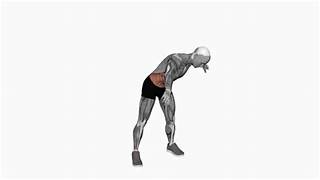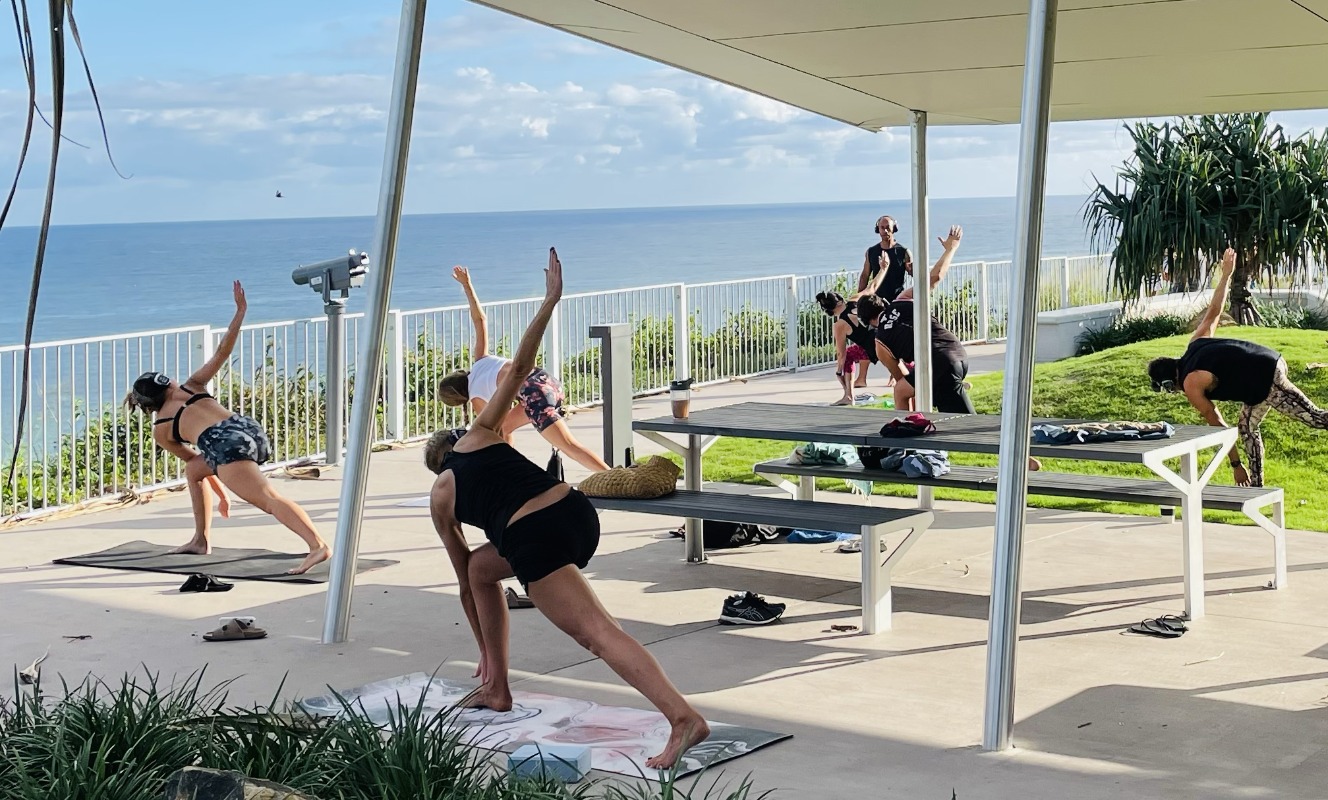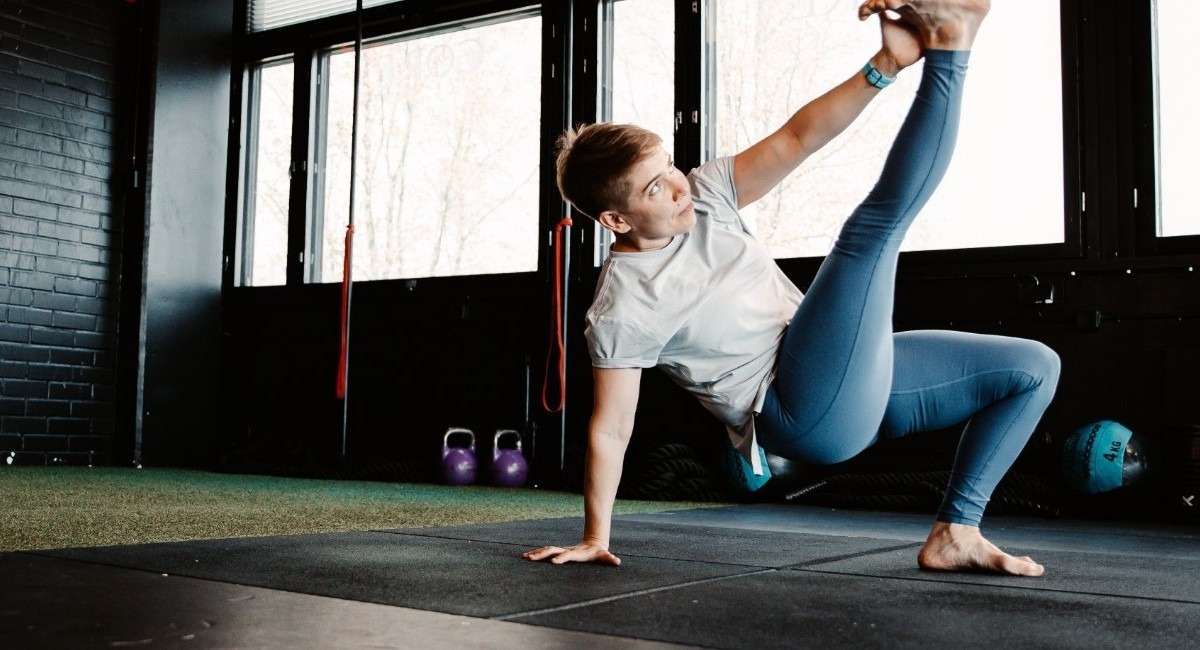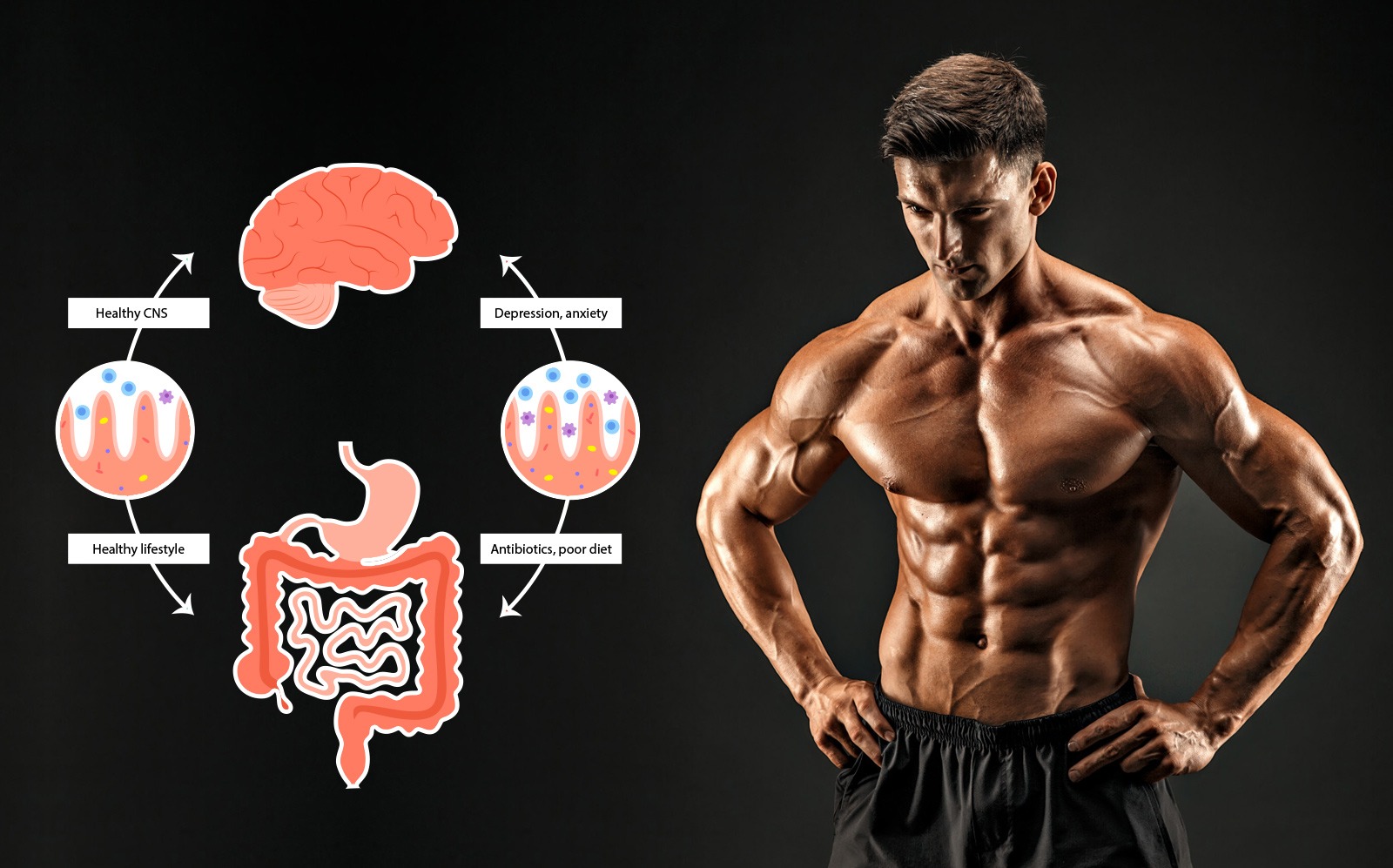
Ultimate Guide To Bodyweight Exercises For Your Home Workout.
Discover the power of bodyweight exercises in this comprehensive guide tailored for home workouts. With no equipment needed, you’ll learn how to build strength, improve endurance, and stay fit using just your body. Perfect for all fitness levels, these exercises are versatile, effective, and easy to integrate into any schedule. Start your fitness journey today with safe, scalable movements that deliver real results—anytime, anywhere, at your own pace.
💪 Fitness Guru
41 min read · 16, Jun 2025

Introduction
Working out at home has gained immense popularity due to its convenience, cost-effectiveness, and flexibility. One of the most efficient and accessible ways to stay fit without the need for equipment is through bodyweight exercises. These exercises utilize your own body weight as resistance and can be adapted for all fitness levels. Whether you are a beginner looking to build strength or an advanced athlete seeking a challenge, bodyweight exercises are an excellent foundation for any fitness routine.
Chapter 1: What Are Bodyweight Exercises?
Bodyweight exercises are strength-training movements that use the individual’s weight to provide resistance against gravity. These exercises are commonly performed without additional weights or gym equipment, making them perfect for home workouts.
Some classic examples include:
- Push-ups
- Squats
- Planks
- Lunges
- Burpees
- Sit-ups
- Pull-ups (requires a bar)
Bodyweight exercises can help improve strength, endurance, flexibility, and coordination. They also enhance balance and stability as multiple muscle groups are often activated simultaneously.
Chapter 2: Benefits of Bodyweight Exercises
- Accessibility: No equipment is needed. Perfect for small spaces and tight schedules.
- Versatility: Can be easily modified for beginners or advanced athletes.
- Full-body Workout: Targets multiple muscle groups.
- Cardio and Strength: Can be used for cardiovascular conditioning and muscle toning.
- Injury Prevention: Reduces the risk of overtraining specific muscle groups.
- Functional Fitness: Improves real-life movement patterns and posture.
Chapter 3: Essential Bodyweight Exercises and Variations
1. Push-Ups
- Muscles Worked: Chest, shoulders, triceps, core.
- Beginner: Incline Push-Ups (hands on a bench)
- Advanced: Diamond Push-Ups, Plyometric Push-Ups
2. Squats
- Muscles Worked: Quads, glutes, hamstrings, calves.
- Beginner: Chair Squats
- Advanced: Jump Squats, Pistol Squats
3. Planks
- Muscles Worked: Core, shoulders, back.
- Beginner: Knee Planks
- Advanced: Side Planks, Plank with Shoulder Taps
4. Lunges
- Muscles Worked: Quads, glutes, hamstrings, calves.
- Beginner: Stationary Lunges
- Advanced: Jumping Lunges, Bulgarian Split Squats (using a chair)
5. Burpees
- Muscles Worked: Full body
- Beginner: Step-back Burpees
- Advanced: Burpees with Push-up or Tuck Jump
6. Sit-ups and Crunches
- Muscles Worked: Abdominals
- Beginner: Crunches
- Advanced: V-Ups, Bicycle Crunches
7. Glute Bridges
- Muscles Worked: Glutes, lower back, hamstrings.
- Beginner: Basic Glute Bridge
- Advanced: Single-leg Glute Bridge
Chapter 4: Structuring Your Home Bodyweight Workout
A well-balanced home workout should include elements of strength, mobility, and cardiovascular endurance. Here is a sample weekly structure:
Day 1: Full Body Strength
- Push-ups: 3 sets of 12
- Squats: 3 sets of 15
- Planks: 3 x 30 seconds
- Lunges: 3 sets of 10 per leg
Day 2: Cardio and Core
- Burpees: 3 sets of 10
- Sit-ups: 3 sets of 20
- Jumping Jacks: 3 sets of 30 seconds
- Plank with Shoulder Taps: 3 x 20 taps
Day 3: Rest or Active Recovery
- Yoga or light stretching
Day 4: Lower Body Focus
- Jump Squats: 3 sets of 15
- Bulgarian Split Squats: 3 sets of 10 per leg
- Glute Bridges: 3 sets of 15
Day 5: Upper Body and Core
- Incline Push-ups: 3 sets of 12
- Side Planks: 3 x 30 seconds each side
- Bicycle Crunches: 3 sets of 20
Day 6: Cardio Blast
- High Knees: 3 sets of 30 seconds
- Burpees: 3 sets of 12
- Mountain Climbers: 3 sets of 30 seconds
Day 7: Rest
Chapter 5: Tips for Progression and Motivation
- Track Your Progress: Keep a journal of reps, sets, and improvements.
- Use a Timer: Tabata and EMOM (Every Minute on the Minute) formats keep it dynamic.
- Mix It Up: Change exercises weekly to avoid plateaus.
- Stay Consistent: Aim for at least 3-4 days per week.
- Incorporate Mobility: Stretching and mobility drills aid recovery and performance.
Chapter 6: Safety and Precautions
- Warm Up Properly: Always begin with 5-10 minutes of light cardio and dynamic stretches.
- Focus on Form: Quality over quantity to avoid injury.
- Know Your Limits: Listen to your body and rest as needed.
- Hydrate and Fuel Well: Proper nutrition and hydration support recovery.
Bodyweight exercises have emerged as one of the most accessible, cost-effective, and versatile fitness solutions, especially for those seeking the flexibility of working out from home. Without needing a single piece of equipment, these movements harness the weight of your own body to build strength, endurance, flexibility, and cardiovascular fitness, making them perfect for beginners and experienced athletes alike. Exercises such as push-ups, squats, planks, lunges, burpees, sit-ups, and glute bridges are foundational, engaging multiple muscle groups and promoting balance, coordination, and functional strength, all of which enhance everyday movements. The true beauty of bodyweight training lies in its adaptability—each movement can be scaled to match an individual’s fitness level. For instance, a beginner can perform incline push-ups against a countertop, while a more advanced user might incorporate plyometric push-ups to increase intensity. Similarly, chair squats provide a safe and effective starting point for novices, whereas pistol squats challenge even the most seasoned athlete. Integrating these exercises into a weekly routine allows for comprehensive coverage of all major muscle groups, and by varying the sets, reps, or tempo, one can avoid plateaus and continually challenge the body. A balanced weekly plan might include full-body sessions on Day 1 and 4, cardio and core on Day 2 and 6, and active recovery days like stretching or yoga on Days 3 and 7. Emphasizing proper form is crucial—quality should always trump quantity to reduce the risk of injury and ensure the muscles are effectively targeted. Warming up before each session with dynamic stretches and light cardio enhances performance and reduces the likelihood of strain, while post-workout stretching aids recovery and maintains mobility. Nutrition and hydration play a supportive role in optimizing workout results, particularly as one progresses to more challenging movements. While bodyweight exercises can absolutely support muscle building—especially through progressive overload methods such as increasing repetitions, incorporating isometric holds, or modifying leverage—those aiming for maximal hypertrophy might eventually pair bodyweight training with added resistance. However, for most fitness goals including fat loss, toning, endurance, and functional fitness, bodyweight workouts alone can be incredibly effective. Furthermore, they can be performed anytime, anywhere—whether during a break at work, in a hotel room while traveling, or in your living room after putting the kids to bed. The simplicity and accessibility eliminate many of the common excuses related to gym access or time constraints. To stay motivated and track progress, maintaining a fitness log, setting small achievable goals, or using apps and timers for circuit and Tabata workouts can add structure and gamify the experience. If one encounters a plateau, solutions include increasing intensity, changing the workout format (such as switching to circuits or supersets), or ensuring adequate rest and recovery. Incorporating mobility work is equally essential—tight hips or shoulders, for example, can hinder performance in squats or push-ups and increase injury risk over time. Additionally, bodyweight exercises are particularly beneficial for seniors, as they support joint health, maintain balance and coordination, and can be tailored to suit mobility levels with variations such as wall push-ups or seated leg raises. Perhaps one of the most underrated benefits of bodyweight training is its impact on mental health. The act of moving regularly, seeing measurable progress, and developing confidence in one’s physical abilities contributes to a positive mindset, reduces stress, and enhances overall well-being. When performed consistently—ideally three to six times a week—bodyweight workouts yield impressive long-term results. Sessions can be as short as 20 minutes or extended to 45 depending on the intensity, and still be effective. It’s also important to embrace rest days, not as downtime, but as critical windows for the body to repair, rebuild, and return stronger. As one’s strength and proficiency increase, adding advanced variations or integrating high-intensity intervals keeps workouts challenging and prevents boredom. Whether your goal is to lose weight, gain muscle, improve endurance, or simply move better in everyday life, bodyweight training provides a solid, sustainable path. The journey starts with small, consistent actions: doing 10 push-ups today, improving to 15 next week, and soon performing 25 with ease. The compound effect of such progression builds not only physical resilience but also discipline and confidence. To summarize, bodyweight exercises are a highly effective training method for anyone seeking a practical and powerful way to get fit from home. They require no equipment, are adaptable to any fitness level, support full-body conditioning, and encourage functional, lifelong strength. Whether you’re just starting out or looking to enhance your current routine, incorporating bodyweight exercises offers lasting physical and mental benefits without ever stepping foot in a gym.
Bodyweight exercises have long been celebrated as a powerful and practical method for improving fitness, particularly when working out at home, where access to gym equipment may be limited or nonexistent. These exercises utilize the weight of your own body as resistance to build strength, endurance, flexibility, and cardiovascular health, offering an inclusive approach that suits all fitness levels, from complete beginners to advanced athletes. With exercises such as push-ups, squats, planks, lunges, burpees, and sit-ups, you can target nearly every muscle group in your body, promoting balanced development and functional movement that translates into everyday strength and agility. What makes bodyweight exercises especially appealing is their versatility—they can be modified and scaled in intensity based on your individual needs and goals. For example, someone new to fitness may start with incline push-ups or wall sits, gradually progressing to standard push-ups or jump squats as strength improves, while more experienced individuals can experiment with explosive plyometric variations, time under tension, and single-limb exercises like pistol squats or single-leg glute bridges. Because they require no equipment and minimal space, bodyweight workouts are ideal for busy schedules and small living areas, and they eliminate common barriers such as cost, commute time to the gym, and access to machinery. Moreover, these exercises are not only efficient in building muscle but are also excellent for burning calories and enhancing cardiovascular conditioning when performed in circuits or high-intensity intervals. A well-rounded weekly plan could include full-body strength training, cardio-focused routines, core-specific workouts, and active recovery days featuring stretching or yoga, offering a sustainable rhythm that balances intensity and rest. For instance, a sample week might include a Monday full-body workout with push-ups, squats, and planks; Tuesday cardio and core featuring burpees, bicycle crunches, and mountain climbers; Wednesday active recovery with dynamic stretching or a gentle yoga flow; Thursday lower body focus with jump squats, glute bridges, and lunges; Friday upper body and core emphasizing incline push-ups, side planks, and leg raises; Saturday high-intensity interval training with burpees, high knees, and jumping jacks; and Sunday rest or a meditative walk. Importantly, safety and technique should always be prioritized—warming up for 5 to 10 minutes before any session using dynamic movements like arm circles, leg swings, and gentle cardio ensures joints and muscles are prepared, while maintaining proper form during exercises reduces the risk of injury and maximizes efficiency. Tracking progress is another key to long-term success, and a simple workout journal or app can help record reps, sets, time, or perceived exertion, allowing you to set goals, recognize improvements, and stay motivated. If your goal is to lose weight, combining bodyweight training with a clean and nutritious diet—rich in whole foods, lean proteins, healthy fats, and complex carbohydrates—will accelerate fat loss and muscle definition, especially when workouts elevate your heart rate through consistent effort and minimal rest between sets. On the other hand, if building muscle is your priority, slowing down repetitions, increasing volume, and incorporating more advanced variations will stimulate growth even without external weights. Rest and recovery are equally important—muscles repair and strengthen during downtime, so taking at least one full rest day per week and getting quality sleep are essential components of any fitness routine. For those who fear they may hit a plateau, the solution lies in progression: altering angles, increasing repetitions, adding time under tension, or integrating compound movements that recruit more muscles, such as combining a lunge with a twist or a push-up with a reach. Additionally, the mental health benefits of bodyweight training should not be overlooked; regular physical activity boosts mood, reduces stress, and promotes better sleep, all of which are vital for overall well-being. Seniors, too, can benefit greatly from bodyweight exercises, as they enhance balance, mobility, and strength in a low-impact way that supports daily function and reduces fall risk, with simple variations such as seated leg raises or wall push-ups providing a safe starting point. Likewise, those recovering from injury can use bodyweight movements as a gentle reintroduction to fitness, focusing on controlled motion and rehabilitation-friendly exercises. In terms of workout duration, even short sessions of 20 to 30 minutes, when performed consistently, can yield significant results, and integrating formats like Tabata (20 seconds work, 10 seconds rest) or EMOM (Every Minute on the Minute) can add structure and challenge. The flexibility of bodyweight training also allows you to stay active while traveling, as no special setup is required—just a few square feet of space and a willingness to move. Over time, the consistency, adaptability, and challenge of bodyweight workouts create an empowering feedback loop: as your body becomes stronger and more capable, your motivation grows, leading to even greater commitment and results. Whether your aim is fat loss, muscle tone, increased stamina, or general health improvement, bodyweight training offers a comprehensive, convenient, and highly effective solution, eliminating excuses and putting control of your fitness directly in your hands. The key is to start where you are, use what you have—your body—and do what you can, with a mindset focused on steady, realistic progress rather than perfection. The discipline and strength you develop through consistent practice will not only transform your body but also enhance your confidence, resilience, and quality of life in ways that extend far beyond your workouts.
Conclusion
Bodyweight exercises offer an efficient, cost-free, and flexible way to stay fit at home. They cater to all levels of fitness, from beginners to seasoned athletes, and provide comprehensive benefits ranging from strength and endurance to flexibility and coordination. With consistent effort and smart planning, you can achieve significant fitness goals right from your living room.
To recap:
- No equipment is needed.
- Adaptable for all fitness levels.
- Promotes full-body fitness.
- Can be structured to meet any goal, from weight loss to muscle building.
Consistency and variety are key. Keep challenging your body and stay dedicated to your routine, and you will see results over time.
Q&A Section
Q1: What is the best time of day to do bodyweight exercises?
Ans: The best time is when you feel most energetic and can be consistent. For some, it’s the morning; for others, the evening. What matters most is consistency.
Q2: Can I build muscle with just bodyweight exercises?
Ans: Yes, especially for beginners and intermediate athletes. Progressive overload through variations, increased reps, and time under tension can help build muscle.
Q3: How often should I do bodyweight workouts?
Ans: Aim for 3 to 6 times per week, depending on your goals and recovery ability.
Q4: What if I can't do a full push-up or squat yet?
Ans: Start with modified versions like knee push-ups or chair squats and gradually work up to the standard versions.
Q5: Do I need to warm up before a bodyweight session?
Ans: Absolutely. A good warm-up improves performance and prevents injuries. Spend 5-10 minutes on light cardio and dynamic stretching.
Similar Articles
Find more relatable content in similar Articles

The Silent Workout: Fitness Without Any Equipment or Noise...
“Discover the power of silent .. Read More

The Science of Breathwork: Fitness Beyond Muscles...
Exploring how conscious contro.. Read More

Fitness Lessons from Wild Animals – Move Like Nature Intende..
“Discover how observing wild a.. Read More

Microbiome and Muscle: Gut Health as a Hidden Fitness Tool...
Unlock the hidden potential of.. Read More
© 2024 Copyrights by rFitness. All Rights Reserved.